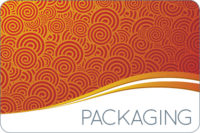There is a delicate balance in the modified-atmosphere packaging (MAP) and case-ready arena between new technologies, controlling costs and meeting the demands of the ever-changing consumer in other words, which packaging technology meets the economic requirements of processor/retailer and the aesthetic and functionality desires of the consumer?
MAP systems became a mainstay in retail meat cases around the United States in the 1990s, with the initial purpose of extending shelf-life while ensuring a bright and fresh bloomed color. Since that time, the evolution of technologies, processors, retailers and even consumers has significantly changed the role of MAP. In today’s world the processor must implement manufacturing, labor and packaging efficiencies to manage costs and increase output.
Retailers continue to require turn-key solutions for products in the meat case as they try to differentiate themselves, battle a changing labor skill and cost structure, as well as competition for market share. And customers are responding to the economic downturn by looking for high- value, low-cost, easy-to-prepare, great-tasting meals that they can fix in a minute to meet the demands of family and work.
While the industry works to make improvements in MAP technologies, the focus truly remains constant “With any development we must find the ‘sweet spot‘ between efficiencies and cost at the processor level while continuing to meet the needs of the retailer and consumer,” explains the director of marketing for one case-ready packaging supplier.
When asked about the consumer acceptance of low-oxygen, roll-stock or skin-tight packaging versus the lidded, full bloom packaging, the director commented that there is a growing segment of retailers and consumers that are accepting of the low-oxygen, barrier-film, vacuum-sealed packaging that with red meat products specifically produces natural myoglobin (purple) meat color, yet a vast majority of retailers continue to desire a bloomed color in the package, afforded by gas-flushed lid stock or overwrap technologies.
A majority of the recent improvements in MAP center around extending shelf-life while continuing to offer the bloom retailers desire and decreasing packaging waste while maintaining product quality and safety. The bulk of these improvements can be implemented with minor additional inputs to existing equipment which makes the transition more cost effective for the processor. As the MAP industry moves forward, the director of marketing sees two key challenges for success.
“The first key challenge is to produce a packaging platform that delivers a quality lifecycle for the product, and the second key challenge is to ensure that system is efficient for the processor and that it enables them to push the product through the system effectively.”
Packaging objectives of lamb and veal processor Mountain States Rosen appear to line up with those of the packaging industry, as Dr. Dennis Stiffler, CEO of MSR states.
“Case-ready and MAP packaging for us means matching technology with the retailers’ needs to ensure consumer acceptance and an optimum shelf life to assist with retail case management and returns,” Stiffler explains. “Lamb and veal have become more specialty products at retail, and as such, the more we can do to manage the category for the retailer and adapt technologies that allow the retailer to present selection and variety to the consumer, the more it will provide a win, win, win.”
Case-ready is an integral part of MSR’s future, and Stiffler adds that, as MAP and case-ready technologies advance, he sees no apparent “favorite” packaging technology among retailers or consumers. However, quality product life and improved efficiencies with versatile options will make the difference in a processor’s ability to remain viable and profitable.
Elizabeth A.W. Dressler, M.S., of West Spear Consulting, a technical services & marketing business, can be contacted at (303) 246-0807 or west.spear.consulting@gmail.com.


Report Abusive Comment